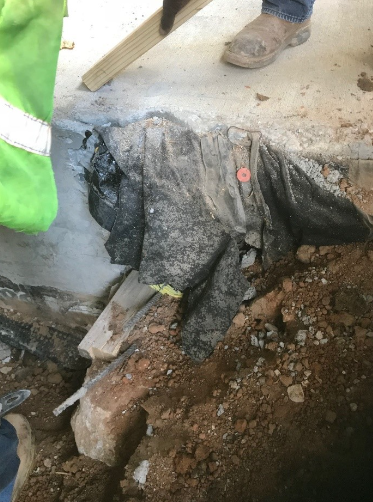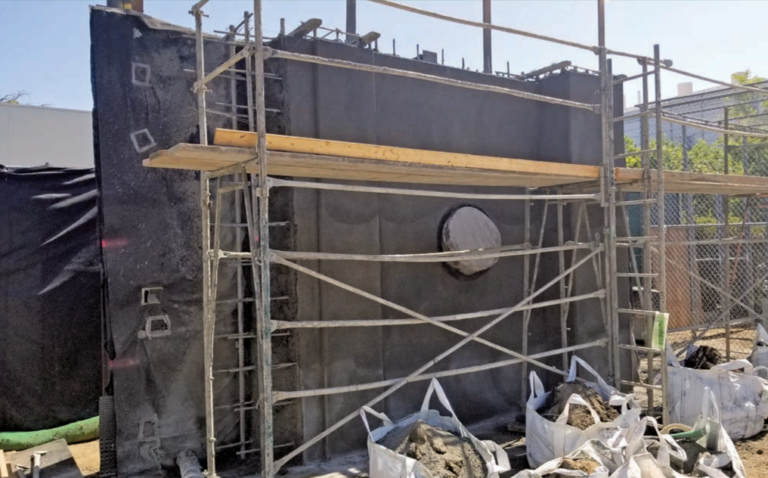We’ve all heard someone say, “I’ve been doing it this way for 30 years.” The first thing to
consider is whether that is a good thing or a bad thing? Answering that question really depends on if the “30 years” is blissful ignorance or “30 years” of useful lessons learned.
To help make that evaluation, we must realize there are only three angles to constructing or
repairing anything: the fundamental principle of good design, the material chosen for the
design, and the process for installing/assembling the material to meet the design. We can think of each angle as the facet of a prism, and then use the prism as a lens to bring things into focus. Once we have a clear picture of what they are doing, we can then measure the results against merciless yardstick of time. So, before we hand over our pride and joy or run away screaming, here are some thoughts to consider.
One of the best examples of not understanding the fundamentals of good design is the simple and effective quarter inch groove on the underside of a stone windowsill. Stonemasons for thousands of years have understood that a critical part of keeping the inside of a building dry is managing the water on the outside. Basically, if it doesn’t get wet, it doesn’t leak. This understanding is the beauty in the design of a traditional stone windowsill. The stone is angled away from the building. The stone is extended beyond the face of the brick façade. And finally, just several inches away from the front edge of the stone, is a quarter-inch wide groove. Most people can understand the slope on the top side of the stone, but they wonder why there is a groove on the underside. The quarter-inch groove has a vital function. Because water has surface tension, the rain flowing across the top of the stone and down the face wants to move along the underside of the stone towards the building. That water moving towards the building is stopped before reaching the building by the groove on the edge of the overhang which causes the water to drop away from the building. What has amazed me about many restoration projects is how often the replacement stones, that are made to match the original ones, are missing the groove. This lost understand for the use of the groove is the result of modern designers eliminating the extended sill for the past half a century because they don’t like how they look. So, the value of the “doing it this way” depends on what time in history the 30 years occurred, and when the design principles were learned.
A prime example of not knowing how changing a single component can impact the whole
system, is the devolution of asphalt mastic. There was a time when asphalt mastic was a vital part to making roofing and waterproofing systems watertight. It could be used up on a roof. It could be used below-grade for waterproofing. It would stick to anything. It would stay flexible. And it seemed to last forever. That’s just not the case anymore. It’s not that asphalt mastic is a bad material, it’s just not the same product it had been in the past. With the advent of the EPA and the subsequent removal of components from construction materials, such as asbestos and volatile organic compounds (VOC), the performance and longevity of asphalt mastic has declined. The new generation of mastics dry out, crack, and lose their adhesion far sooner than earlier models. Instead, there are products today based on new technologies, like silyl terminated polyether (STPE) that have significant performance advantages with a nominal difference of installed cost. So, what was the go-to product for “thirty years” is now a component that reduces the overall performance of any roofing or waterproofing system.
An interesting example of not realizing the impact of the installation methods on the longevity of a system is a friend who had been a third-generation roofer. He had grown up working on roofing crews with his family’s company well into adulthood. One of their big customers was a school district in which he personally installed numerous roofs. He and his brothers eventually decided that it was time to get out of the roofing industry and they all started new careers. My friend happened to have the opportunity to be the maintenance director for the school district which he had installed multiple roofs. Over time he started to notice that the roofs he had installed began to leak and fail. Upon examination he realized that the processes they used to install the roof, which they thought were best practices, were causing the roofs to fail prematurely. Roofs that should have a normal life expectancy of 20 years or more, were failing at 10 years. Prior to becoming the director, he was completely unaware of the issues because the leaks took almost 10 years appear and their company was never notified of the problems. This is not an uncommon occurrence. Many companies that specialize in new construction are unaware of how their installation methods affect the long-term performance of the systems they are producing. So, just because the method has been used for “thirty years” doesn’t mean it will result in a roofing or waterproofing system that will meet the long-term performance expectations.
From these simple examples and a basic understanding of design, material, and installation, we now have a lens to help us focus in on the important factors for making good decisions relative to construction. It also helps us decide if we should be encouraged or frightened when someone says, “I’ve been doing it this way for 30 years.”






